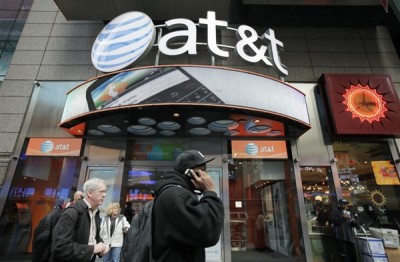
image credit investigations.nbcnews.com
The US government’s tracking of telephone calls is far more widespread than Americans thought.
The Drug Enforcement Administration (DEA) has its own telephone call program that’s even more extensive than the National Security Agency’s. The DEA has accumulated a database of records of billions of telephone calls dating back to 1987 under its Hemisphere Project, The New York Times discovered.
Like the NSA, the agency pays major telecoms such as AT&T for access to records of calls in what it calls High Intensity Drug Trafficking Areas. The program maintains a massive database of call information based in Los Angeles, Houston and Atlanta.
Tracking Phones
The Hemisphere Project accumulates massive amounts of data that federal agents can use to track telephone records. Any information can be emailed to a federal agent within an hour of a request. The DEA is able to use the information accumulated to track phones through the AT&T network.
The software used by the Hemisphere Project’s agents can find new numbers for disposable phones, identify additional phones that individuals are using, and track international phones. Like the NSA’s project PRISM, the Hemisphere Project uses court orders and subpoenas to get access to the information.
Currently Hemisphere tracks phones through AT&T’s network, and it also has been able to determine the geographic location of phones through pinging. The project has the ability to locate individual phones.
A PowerPoint presentation about Hemisphere indicates that the DEA and the Royal Canadian Mounted Police (RCMP) were able to use the information to identify members of the Hells Angels motorcycle gang. The information led to drug raids and arrests in Ontario and Quebec.
Federal law enforcement agencies now have monitoring capabilities that rival or exceed those of the NSA. Average people can be tracked down by agents after making just one phone call.
Discover The Only Way Back To True Freedom And Liberty In America…
“The scale and longevity of the data storage appears to be unmatched by other government programs, including the N.S.A.’s gathering of phone call logs under the Patriot Act,” the Times reported. “The N.S.A. stores the data for nearly all calls in the United States, including phone numbers and time and duration of calls, for five years.
Hemisphere covers every call that passes through an AT&T switch — not just those made by AT&T customers — and includes calls dating back 26 years. … Unlike the N.S.A. data, the Hemisphere data includes information on the locations of callers.”
Even people that change their phones can be tracked down if they keep calling the same numbers. This enables agents to track individuals using so-called burners, or cell phones that they throw away after making just a couple of calls. Drug dealers and gangsters often use burners to communicate with each other.
Jameel Jaffer, deputy legal director of the American Civil Liberties Union, said told The Times that the program “certainly raises profound privacy concerns.”
“I’d speculate that one reason for the secrecy of the program is that it would be very hard to justify it to the public or the courts,” he said.
Even though the numbers remain in AT&T’s possession, “the integration of government agents into the process means there are serious Fourth Amendment concerns,” Jaffer said.
An AT&T spokesperson told ABC News, “While we cannot comment on any particular matter, we, like all other companies, must respond to valid subpoenas issued by law enforcement.”
How to Avoid Being Tracked
The revelations about the Hemisphere Project indicate that the only way to avoid being tracked is to not make phone calls or limit the phone calls that you make. If you call the same number more than one time, even from different phones, they can track you.
Persons who want to avoid being tracked by the government might have to develop true-off-the grid communications, perhaps by using couriers or resorting to old-fashioned methods such as physical mail or written notes. It seems as if the government may be determined to deny freedom of communication to average Americans in the name of “law enforcement.”
 Off The Grid News Better Ideas For Off The Grid Living
Off The Grid News Better Ideas For Off The Grid Living




